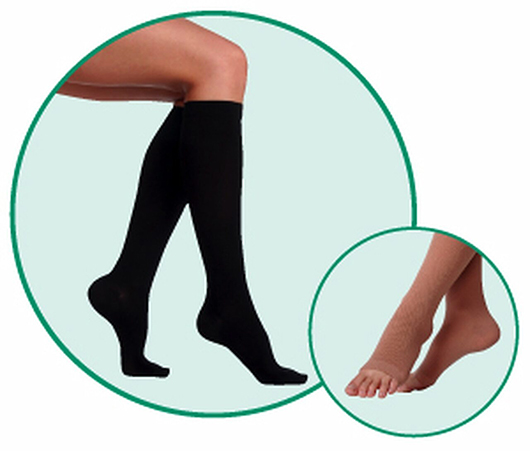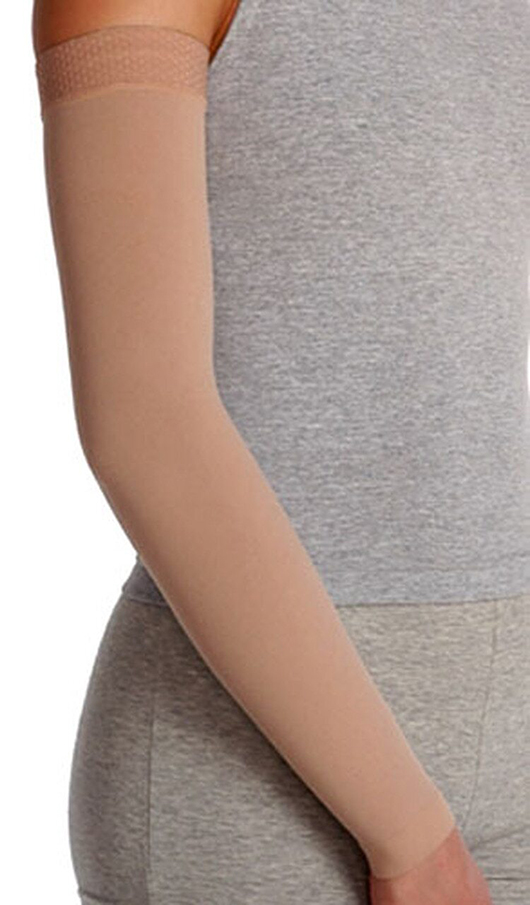Options of Care for Compression Garments
Jan 5th, 2021
Health care professionals often recommend compression garments for breast cancer patients post-surgery to prevent lymphedema. However, light compression garments are ideal for everyday use for people in various professions to manage poor circulation.

Compression garments include anything from bras, to arm sleeves, to tights, to socks. All are designed using gradient pressure to facilitate an efficient flow of bodily fluids for better overall health and movement. When you have Lymphedema, they are often used to prevent lymph fluids from accumulating in areas of your body after surgery.
Because these garments are so important, especially for lymphedema management, you’ll want to take proper care when cleaning them and ensuring their long-term use in providing therapeutic benefits.
Frequent Washing
The best way to maintain the elasticity, shape and therapeutic benefits of compression garments is to wash them frequently, maybe even daily. This helps restore them to their original properties and removes any collected body oils, dead skin, bacteria, dirt, or perspiration. As long as the washing is done gently and adequately, frequently doing so is beneficial.
Body lotions, oils, and some deodorants can break down fibers in the garments as well. Washing to remove them is imperative. Refer to the manufacturer’s care instructions to ensure you provide optimal care of the garments overall.
Compression garments contain inlay threads made of rubber or Lycra woven into the garment to aid in the right amount of compression. Stockings and socks are designed with durable elastic materials and, when subjected to even a few hours of wear, can experience stretching, especially in the knee and elbow areas.
Washing your compression garments daily can strengthen the elastic and restore the compression properties, so you continue to gain the therapeutic benefits they are designed for.
Use Appropriate Washing Solutions
The best washing solutions are mild detergents or soap that are free of laundry additives such as bleach, chlorine, or fabric softeners. Avoid using any harsh cleaning agents, petroleum-based cleaners, and solvents because these can damage the thinner fibers found in compression garments.
You may want to use washing solutions specially formulated for compression garments that can help extend their life.
Hand Wash Option
In most instances, hand washing is not required and is based on your preference, schedule, and energy levels. To efficiently hand wash your garments, follow these simple steps:
- Fill a container, whether a sink, small tub, bowl, or bucket, with warm or cool water, depending on the manufacturer’s instructions.
- Dip the garment into the water, dampening it thoroughly.
- Add your chosen washing solution in a small amount.
- Allow your garment to soak for 10-15 minutes.
- Place your hands in the water and gently rub the garment fibers together without stretching them too much.
- Empty the container and add fresh water.
- Rinse the garment thoroughly, paying particular attention to the seams.
- Gently squeeze to remove excess water.
Machine Wash Option
If you choose to wash your compression garments in the washing machine, take additional measures rather than simply tossing them in with other clothes. Here are a few good tips for machine washing.
- Place each compression garment in a mesh laundry bag before placing it in the washing machine.
- Run your washing machine on a gentle cycle
- Select cool or warm water temperatures. (It is recommended the water not be warmer than 104°F or colder than 96°F).
It’s essential to keep in mind that it only takes one rough rinse cycle, an incorrect dryer setting, or a harsh cleaner to end these garments’ compression abilities and value.
Drying Options
You have a few options for drying your compression garments.

Place them in the dryer and set the dial to a no-heat cycle or a maximum low heat setting. High heat can damage or weaken its fibers. It can also damage silicone bands a garment may have, such as you’ll find on the JUZO Soft Sleeve. The silicone border on this garment helps hold the sleeve in place so it can provide just the right amount of compression along your arm.
A second option is to air dry your garments after slightly squeezing out the excess water. Avoid wringing or pulling on the garment excessively, however. A better way to remove excess water is to roll the garment up in a towel first and give it a gentle squeeze. Remove from the towel and lay flat to dry.
A few additional tips for air drying include:
- Avoid hanging them up as the weight of the water can stretch the garments, especially compression stockings.
- Keep drying garments out of direct sunlight.
- Turn the garment inside out while drying.
Even after taking all the precautions and the right steps to care for your compression garments, there eventually will come a time when they need to be replaced. Most garments can last up to six months, but it depends on your usage and if you use alternates.
Choosing the right compression garments doesn’t have to be a challenge. Contact our helpful staff here at Mastectomyshop.com by calling (877) 413-2272, and we’ll walk you through the process and help you choose the best product for your unique needs.



